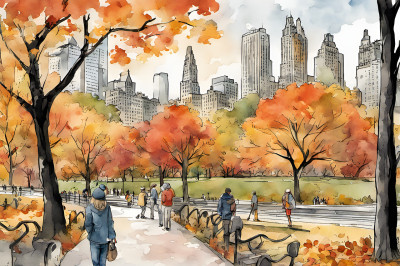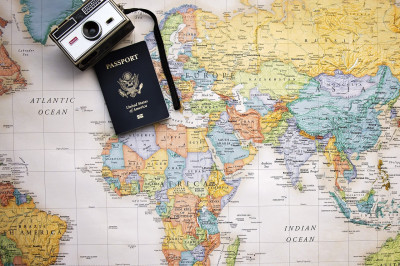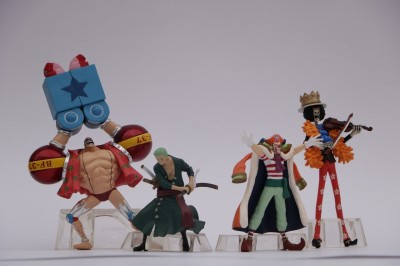A Land of Diverse Beauty and Heritage
Vietnam, a slender S-shaped country, stretches along the eastern coast of the Indochinese Peninsula. It is a land of striking landscapes that range from the lush rice terraces and forested mountains in the north to the picturesque valleys of the Central Highlands and the fertile delta and beautiful beaches of the south. With over 3,000 kilometers of coastline, Vietnam is home to some of the world's most beautiful bays and beaches.
Geographic Splendor
Vietnam's geography is as complex as it is beautiful. In the north, the towering peaks of Ha Giang and the famous terraced fields of Sapa illustrate the ruggedness of the region. The iconic Halong Bay, with its emerald waters and thousands of towering limestone islands topped with rainforests, is a UNESCO World Heritage Site and a testament to the country's natural beauty.
Moving to the central region, the ancient city of Hue stands as a symbol of the imperial past, with its well-preserved citadel and royal tombs. Nearby, the charming town of Hoi An, with its well-preserved Ancient Town, is another UNESCO World Heritage Site, reflecting the fusion of indigenous and foreign cultures.
The southern part of Vietnam is dominated by the Mekong Delta, a vast maze of rivers, swamps, and islands with floating markets, khmer pagodas, and villages surrounded by rice paddies. The bustling city of Ho Chi Minh City, formerly known as Saigon, serves as the economic heart of the country and is a vibrant mix of old and new.
Cultural Tapestry
Vietnam's history is as complex as its topography, with influences from China, France, and the United States shaping its cultural and architectural heritage. The country's rich tapestry is evident in its myriad cultural practices, languages, and beliefs. The Vietnamese language itself is a mix of Mon-Khmer, Tai, and Chinese elements, while the nation's cuisine is a delectable blend of flavors and techniques from across the region and beyond.
The country's spiritual life is equally diverse, with indigenous religions like the worship of the Hung Kings coexisting with Buddhism, Christianity, and Confucianism. Traditional festivals such as Tet (Lunar New Year), the Mid-Autumn Festival, and the Hung Kings' Temple Festival are celebrated with great fervor, showcasing the country's rich customs and traditions.
Architectural Heritage
Vietnam's architectural heritage is a reflection of its historical and cultural evolution. From the ancient temples and pagodas that dot the landscape to the French colonial buildings in Hanoi and Ho Chi Minh City, the country's buildings tell stories of conquest, colonization, and liberation. The Imperial City in Hue, with its massive walls and gates, represents the pinnacle of Vietnamese imperial architecture, while the stilt houses of the ethnic minorities in the northern mountains display the adaptability and harmony with nature of Vietnam's diverse ethnic groups.
Living Traditions
Despite rapid modernization, Vietnam remains deeply connected to its past. Traditional handicrafts such as silk weaving, lacquerware, and bamboo basketry are still practiced throughout the country. The art of water puppetry, which dates back to the 11th century, continues to captivate audiences, reflecting the agricultural society from which it originated.
Vietnam's music is another area where traditional forms are preserved. From the sophisticated melodies of ca tru (ceremonial singing) to the energetic beats of traditional folk music, the country's sounds are a testament to its rich cultural heritage.
Vietnam's diverse beauty and heritage are the result of its complex history and geography. From its stunning natural landscapes to its rich cultural traditions and architectural wonders, Vietnam offers a journey through a land where the past and present coexist in a tapestry of timeless charm.
The Vibrant Streets of Hanoi: History and Modernity IntertwinedThe Old Quarter: A Glimpse into Hanoi's Past
The Old Quarter, with its history stretching back over a millennium, stands as a testament to Hanoi's rich past. The narrow streets, named after the specific goods once sold there, such as Hang Bac (Silver Street) or Hang Gai (Silk Street), retain the charm of a bygone era. The area is a maze of streets where traditional Vietnamese houses, some of which have been converted into modern businesses, sit shoulder to shoulder with ancient temples and pagodas.
French Colonial Influence on Architecture
The French colonial period left a significant mark on Hanoi's urban landscape. Tree-lined boulevards and grand villas are a stark contrast to the traditional tube houses of the Old Quarter. Notable examples of French architecture include the Hanoi Opera House and the St. Joseph's Cathedral, both of which are prominent landmarks that blend seamlessly with the city's contemporary hustle and bustle.
Street Food Culture: A Taste of Hanoi's Soul
Hanoi's street food scene is an integral part of its identity, offering a culinary journey through flavors and traditions. From the famous Pho noodle soup to the sizzling Banh Mi sandwiches, the streets are lined with vendors and small eateries that invite locals and tourists alike to indulge in authentic Vietnamese cuisine. The food stalls not only serve delicious fare but also act as social hubs where people from all walks of life gather.
Contemporary Art and Cultural Expression
In recent years, Hanoi's streets have become a canvas for contemporary art and cultural expression. Murals and street art projects, such as those in Phung Hung street, showcase the work of local and international artists, adding a vibrant layer to the city's visual narrative. Art galleries and cultural centers, like the Manzi Art Space and the Hanoi Social Club, offer a platform for modern artistic endeavors, bridging the gap between tradition and contemporary creativity.
The Integration of Technology and Tradition
As Hanoi strides into the future, technology has become increasingly intertwined with daily life. Amidst the traditional markets, one can find tech stores and modern retail spaces. The city's youth, ever-connected, navigate the blend of old and new, often seen riding motorbikes while using smartphones, symbolizing the seamless integration of history and modernity in Hanoi's urban fabric.
Conservation Efforts and Urban Development
Hanoi faces the challenge of preserving its historical identity while accommodating urban development. Efforts to conserve the city's heritage are evident in the restoration of ancient buildings and the implementation of regulations to protect the Old Quarter's unique character. Simultaneously, new construction and infrastructure projects aim to modernize the city while respecting its historical context, ensuring that Hanoi's streets remain a vibrant link between the past and the present.
The Natural Wonders of Halong Bay: A UNESCO World Heritage SiteThe Limestone Karsts and Islands
Halong Bay, located in the Gulf of Tonkin in northeastern Vietnam, is renowned for its emerald waters and thousands of towering limestone islands topped with rainforests. Over 1,600 islands and islets create a spectacular seascape of limestone pillars. Many of these formations are uninhabited and have been shaped by the elements over millions of years, presenting an otherworldly appearance that has become the symbol of Vietnam's natural beauty. These karsts are the result of a complex geological process that includes the dissolution of limestone by water.
Biodiversity and Ecosystems
The bay is not only a visual wonder but also a biodiversity hotspot. It supports various ecosystems, including coral reefs, freshwater swamp forests, dense mangrove forests, and small freshwater lakes on some of the larger islands. The area is home to 14 endemic floral species and about 60 faunal species. It is a sanctuary for many species of birds, reptiles, amphibians, and mammals, some of which are rare and endangered.
Cave Exploration
Among the most captivating features of Halong Bay are its numerous caves and grottoes that offer a glimpse into the bay's geological and historical past. The Sung Sot (Surprise) Cave, Thien Cung (Heavenly Palace) Cave, and Dau Go (Driftwood) Cave are just a few that are accessible to visitors. These caves are filled with stalactites and stalagmites that create an enchanting atmosphere, each telling a story of natural history and local legends.
Floating Villages and Local Culture
The bay is also home to several floating villages, where communities have adapted to life on the water. These villages, such as Cua Van and Vung Vieng, are a testament to the resourcefulness of the local people, who rely on fishing and aquaculture for their livelihoods. Visitors can observe the unique way of life here, which has been preserved for generations, offering insights into the cultural heritage of the region.
Water Activities and Recreation
For those seeking adventure, Halong Bay provides a playground for a variety of water-based activities. Kayaking and canoeing through the karst landscape allow for up-close exploration of the islands and hidden lagoons. Scuba diving and snorkeling are popular for those wanting to explore the underwater world of the bay, with its diverse marine life and clear waters. Cruise tours are also a favorite among tourists, offering a leisurely way to take in the breathtaking scenery.
Conservation Efforts
Recognizing the unique ecological and geological value of Halong Bay, UNESCO designated it as a World Heritage Site in Conservation efforts are crucial to preserving this natural wonder for future generations. The management of tourism, fishing practices, and the protection of the bay's ecosystems are ongoing challenges. Efforts to maintain the delicate balance between economic development and environmental preservation are key to the sustainability of Halong Bay's natural heritage.
Hue: The Imperial City and Its Cultural TreasuresThe Citadel and the Forbidden Purple City
At the heart of Hue lies the sprawling complex of the Citadel, a grandiose statement of power and tradition of the Nguyen Dynasty, which ruled from 1802 to Enclosed by a 10-kilometer-long fortified wall and surrounded by a moat, the Citadel is a city within a city. Within its walls, the Forbidden Purple City stands as a sanctuary that was once exclusive to the emperor and his royal family. Although much of the Forbidden Purple City was destroyed during the wars, restoration efforts have been ongoing, and visitors can still marvel at the meticulous craftsmanship of the surviving buildings, ornate gates, and the serene lotus ponds that evoke the opulence of a bygone era.
The Royal Tombs
Scattered along the Perfume River, the Royal Tombs of Hue are among the most significant historical and cultural landmarks in Vietnam. Each tomb reflects the personality and reign of the Nguyen emperors. The Tomb of Tu Duc, with its tranquil setting and harmonious design, serves as both a burial ground and a retreat where the emperor could escape the demands of the throne. The Tomb of Khai Dinh, on the other hand, showcases an eclectic mix of Eastern and Western architectural styles, highlighting the cultural influences present during his reign.
Thien Mu Pagoda
Overlooking the Perfume River, the Thien Mu Pagoda is an iconic symbol of Hue. This seven-story pagoda is the tallest religious building in Vietnam and is revered for its historical significance and its role in the spiritual life of the locals. The pagoda complex houses several artifacts, including the famous Austin car which belonged to Thich Quang Duc, the monk who self-immolated in 1963 in protest against the Diem regime.
Hue's Traditional Crafts
Hue is also known for its traditional crafts, including the art of Phap Lam enamel, the intricate Zèng textile weaving, and the crafting of paper flowers. These crafts are not only a testament to the city's rich cultural heritage but also provide a livelihood for its artisans. Visitors can explore various workshops and see firsthand the skill and dedication that goes into creating these traditional Vietnamese crafts.
The Hue Festival
Biennially, the Hue Festival transforms the city into a vibrant stage where cultural heritage is celebrated. Performances of traditional music, dance, and theater take place throughout the city, with the Citadel serving as the centerpiece for many events. The festival is a profound expression of the pride the people of Hue have in their cultural legacy, and it offers a unique opportunity for visitors to experience the living traditions of Vietnam.
The Cuisine of Hue
Hue's culinary scene is as rich as its culture, with dishes that were once served to emperors now available to everyone. The city's signature dish, Bun Bo Hue, is a spicy beef noodle soup known for its lemongrass flavor and its perfect balance of spicy, sour, sweet, and umami. Other local specialties include Banh Beo (steamed rice cakes topped with shrimp), Banh Khoai (Hue-style pancakes), and a variety of sweet soups and dumplings, each telling a story of the region's history and the sophistication of the royal cuisine.
Preservation Efforts
Recognizing the importance of preserving its cultural heritage, Hue has been the focus of numerous conservation projects. With support from UNESCO and other international organizations, efforts are underway to maintain and restore the historical monuments, ensuring that the legacy of Vietnam's last imperial capital continues to enchant visitors for generations to come. These preservation efforts are not only crucial for maintaining the physical structures but also for safeguarding the intangible cultural heritage that makes Hue a unique and treasured destination.
Hoi An: A Walk Through the Ancient Town and Its Timeless AppealThe Lure of the Old Quarter
Hoi An's Old Quarter is the heart of this ancient town, a well-preserved example of a Southeast Asian trading port dating from the 15th to the 19th century. As you walk through the narrow lanes, you are transported back in time, surrounded by the old-world charm of yellow-walled houses and traditional architecture. The streets are lined with shops selling a variety of crafts, including the town's famous tailor shops, where bespoke clothing can be made in a matter of hours.
Architectural Marvels and Landmarks
Among the architectural marvels that give Hoi An its timeless appeal are the Japanese Covered Bridge, the Chinese Assembly Halls, and the old merchant houses. The Japanese Covered Bridge, with its pagoda guarding the entrance, is a symbol of Hoi An and a testament to the town's historical Japanese influence. The Chinese Assembly Halls, once places of worship and community for Chinese immigrants, are now open to visitors, showcasing intricate carvings and colorful altars. The merchant houses, such as the Tan Ky and Phung Hung houses, offer a glimpse into the lives of wealthy traders of the past, with their antique furniture and traditional décor.
The Riverside: A Blend of Culture and Commerce
The Thu Bon River is the lifeblood of Hoi An, and the riverside area is a bustling blend of culture and commerce. Here, you can witness the daily life of locals, with fishermen bringing in their catch and vendors selling fresh produce from their boats. In the evenings, the riverside transforms into a romantic setting with lanterns illuminating the water and floating candles drifting downstream, a tradition during the monthly Full Moon Lantern Festival.
Traditional Arts and Crafts
Hoi An is renowned for its traditional arts and crafts, including lantern making, pottery, and wood carving. Visitors can not only purchase these handcrafted items but also participate in workshops to learn the skills themselves. The lantern workshops are particularly popular, where you can create your own silk lantern and take a piece of Hoi An's charm home with you.
The Harmony of Multicultural Influences
The town's multicultural influences are evident in its religious sites, such as the Quan Cong Temple and the My Son Sanctuary. The Quan Cong Temple is dedicated to a revered Chinese general and is a fine example of Chinese architectural and spiritual heritage. The My Son Sanctuary, a short drive from Hoi An, is a UNESCO World Heritage site featuring Hindu temple ruins that reflect the ancient Champa civilization.
Culinary Delights of Hoi An
Hoi An's culinary scene is as rich and diverse as its culture. The town is famous for dishes like Cao Lau, a noodle dish that can only be authentically made with water from the local Ba Le well, and Banh Mi, a Vietnamese sandwich that has been perfected by local vendors. Street food tours and cooking classes are available for those who wish to delve deeper into the flavors of Hoi An.
The Vibrant Night Market
As the sun sets, the Hoi An Night Market comes alive, offering a festive atmosphere where locals and tourists alike gather. The market is a treasure trove of souvenirs, street food, and live entertainment. The colorful stalls, selling everything from hand-painted ceramics to spices, provide a perfect opportunity for visitors to find unique gifts and sample local delicacies.
Preserving the Essence of Hoi An
Efforts to preserve the essence of Hoi An are evident throughout the town. The ban on motorized vehicles in the Old Quarter during certain hours allows for a peaceful exploration of the area. Conservation projects aim to maintain the historic buildings and support sustainable tourism practices, ensuring that Hoi An retains its timeless appeal for future generations.
The Bustling Energy of Ho Chi Minh City: A Glimpse into Vietnam's FutureDynamic Urban Growth
Ho Chi Minh City, formerly known as Saigon, stands as a testament to Vietnam's rapid urbanization and economic development. The city's skyline, punctuated by the sleek Bitexco Financial Tower and the under-construction Landmark 81, is a visual representation of its dynamic growth. With a population that exceeds 8 million, the city is a melting pot of cultures, ambitions, and energies that drive the nation's progress.
Economic Powerhouse
As the financial hub of Vietnam, Ho Chi Minh City contributes a significant portion to the country's GDP. The city is a magnet for both local and international businesses, with bustling markets, high-tech parks, and commercial districts. The Saigon Hi-Tech Park and the Phu My Hung Urban Area are examples of the city's commitment to fostering innovation and attracting foreign investment.
Cultural Fusion and Youthful Vibe
The city's youthful demographic, with more than half of its population under the age of 35, injects a vibrant and forward-thinking spirit into the urban fabric. This energy is palpable in the trendy cafes, art spaces, and fashion boutiques that dot District 1 and District The fusion of traditional Vietnamese culture with global influences is evident in the city's culinary scene, nightlife, and entertainment options.
Infrastructure Development
To accommodate its growing population and economic activities, Ho Chi Minh City is investing heavily in infrastructure. The development of the metro system, which aims to reduce traffic congestion and pollution, is a glimpse into the city's future transportation network. The expansion of Tan Son Nhat International Airport and the construction of Long Thanh International Airport are set to increase connectivity and boost the city's role as a regional aviation hub.
Challenges and Opportunities
While Ho Chi Minh City is a beacon of progress, it also faces challenges such as traffic congestion, environmental pollution, and socio-economic disparities. The city's leadership is tasked with finding sustainable solutions that balance growth with quality of life. Initiatives like the smart city project and green urban planning are steps towards addressing these issues and shaping a resilient and inclusive future for all residents.
The Role of Technology and Innovation
In the heart of Ho Chi Minh City, technology startups and innovation centers thrive, supported by government incentives and a growing pool of tech-savvy talent. The city is becoming a cradle for tech entrepreneurship, with initiatives like the Saigon Innovation Hub (SIHUB) and annual events like the Vietnam Startup Day showcasing the city's commitment to fostering a culture of innovation.
A Hub for Education and Talent Development
Recognizing the importance of education in driving future growth, Ho Chi Minh City is home to prestigious universities and international schools. These institutions are pivotal in nurturing the next generation of leaders, entrepreneurs, and skilled professionals. The city's focus on education ensures a continuous supply of talent to meet the demands of its expanding economy.
The International Perspective
Ho Chi Minh City's allure extends beyond its borders, attracting expatriates and travelers from around the world. The city's international schools, diverse expat communities, and foreign investment are evidence of its global appeal. As Vietnam continues to integrate into the world economy, Ho Chi Minh City is poised to play a central role in shaping the nation's international relations and economic strategies.
The Mekong Delta: Life on the River and Traditional Vietnamese CultureThe Heartbeat of the Delta: The Mekong River
The Mekong Delta, known as the 'Rice Bowl' of Vietnam, is a network of distributaries in southwestern Vietnam, where the Mekong River approaches and empties into the sea. It is a region of fertile lands and waterways that support a dense system of agriculture and aquaculture, serving as the backbone of Southern Vietnam's economy. Life on the river is vibrant and ever-present, with communities that have thrived for generations, living in harmony with the ebb and flow of the waters.
Floating Markets: A Glimpse into Local Commerce
One of the most iconic aspects of the Mekong Delta is its floating markets. These bustling aquatic bazaars are not just tourist attractions but are the lifeblood of local commerce. Markets such as Cai Rang and Cai Be start in the early hours of the morning, where vendors sell fruits, vegetables, and goods from their boats. The unique marketing system using 'Cay Beo' – a sample of goods hung on a pole – allows buyers to see from a distance what is for sale.
Traditional Occupations: The Craft of Living
Traditional occupations in the Mekong Delta are a reflection of the region's rich cultural heritage. Fishing, rice farming, and fruit cultivation are the primary sources of livelihood. Artisanal crafts such as coconut candy making, mat weaving, and pottery also play a significant role in the local economy. These crafts are not only a means of income but also a way to preserve and celebrate the cultural identity of the Delta.
The Rhythm of the Water: Seasonal Changes and Festivals
The Mekong Delta's culture is closely tied to the rhythm of the water, with seasonal changes dictating the pace of life. The lunar calendar governs the agricultural cycles and festivals. The Delta comes alive during traditional festivals such as the Lunar New Year (Tet Nguyen Dan) and the Mid-Autumn Festival (Tet Trung Thu), where dragon boat races, traditional music, and mooncake offerings highlight the connection between the people and the river.
Culinary Delights: A Taste of the Delta
Vietnamese cuisine is celebrated worldwide for its flavors and variety, and the Mekong Delta offers a unique culinary experience. Dishes such as 'Bun Ca' (fish noodle soup) and 'Banh Xeo' (sizzling pancakes) are made with fresh, local ingredients and reflect the abundance of the Delta's resources. The use of fresh herbs, rice, and fish in the local diet exemplifies the region's gastronomic culture.
Architecture and Housing: Stilt Houses and Khmer Influences
The architecture in the Mekong Delta is adapted to the watery landscape. Stilt houses are common, designed to protect against flooding. The region is also home to a significant Khmer population, and their influence is evident in the Buddhist pagodas and temples that dot the landscape. These structures are not only places of worship but also serve as community centers for the local people.
Traditional Music and Dance: Preserving the Delta's Heritage
Music and dance are integral parts of the cultural fabric of the Mekong Delta. Traditional forms such as 'Don Ca Tai Tu' – a genre of chamber music – and the 'Cai Luong' – a form of modern folk opera – are popular among the locals. These art forms are often performed during festivals and gatherings, showcasing the storytelling traditions and the rich cultural heritage of the Delta.
The Role of the River in Daily Life and Spirituality
The Mekong River is not just a source of livelihood; it also holds a deep spiritual significance for the people of the Delta. It is seen as a giver of life and a central figure in local folklore and religion. Many communities have rituals and practices that pay respect to the river, recognizing its vital role in their daily lives and cultural identity.
Reflecting on the Journey
As our exploration of Vietnam comes to a close, we find ourselves immersed in a tapestry of memories that span the vibrant streets of Hanoi, the serene waters of Ha Long Bay, the historic echoes of Hue, and the dynamic pulse of Ho Chi Minh City. Each step through this enchanting country has revealed layers of history, culture, and natural beauty that intertwine to create a journey that is as diverse as it is captivating.
The Cultural Tapestry
Vietnam's cultural heritage is a vivid collage of local customs, traditional performances, and culinary delights. The journey has allowed us to experience the warmth of the Vietnamese people, whose stories and smiles have added a personal dimension to the country's rich history. From the hill tribes of Sapa to the fisherfolk of the Mekong Delta, the spirit of Vietnam is reflected in the resilience and hospitality of its people.
Natural Wonders and Scenic Splendors
The natural landscapes of Vietnam are as varied as they are breathtaking. The terraced rice fields of the north, the limestone karsts of central Vietnam, and the lush deltas of the south each present a unique environment that has shaped the lives of the local inhabitants. These scenic wonders have not only provided a backdrop for our journey but have also been a source of inspiration and reflection.
The Pulse of Progress
Amidst the timeless charm, Vietnam is a nation on the move. The juxtaposition of ancient traditions and modern innovations is evident in the bustling cities and growing economy. This dynamic progress has added another layer to our journey, offering a glimpse into the future of Vietnam while still honoring its past.
Vietnam's Enduring Allure
The allure of Vietnam lies in its ability to embrace change while preserving its soul. The country's history is etched into its architecture, its landscapes, and its people. As travelers, we leave with a profound appreciation for Vietnam's ability to tell its own story—one of resilience, beauty, and continuous transformation. The memories of this journey will linger long after our departure, beckoning us to return to the land of timeless charm.
































